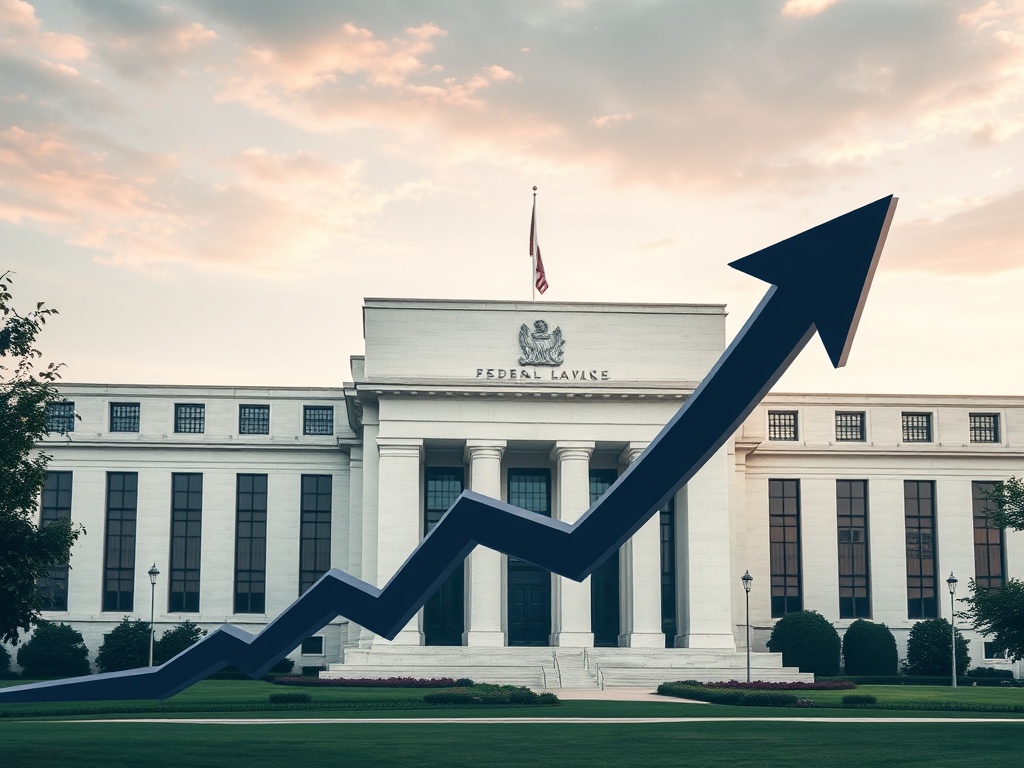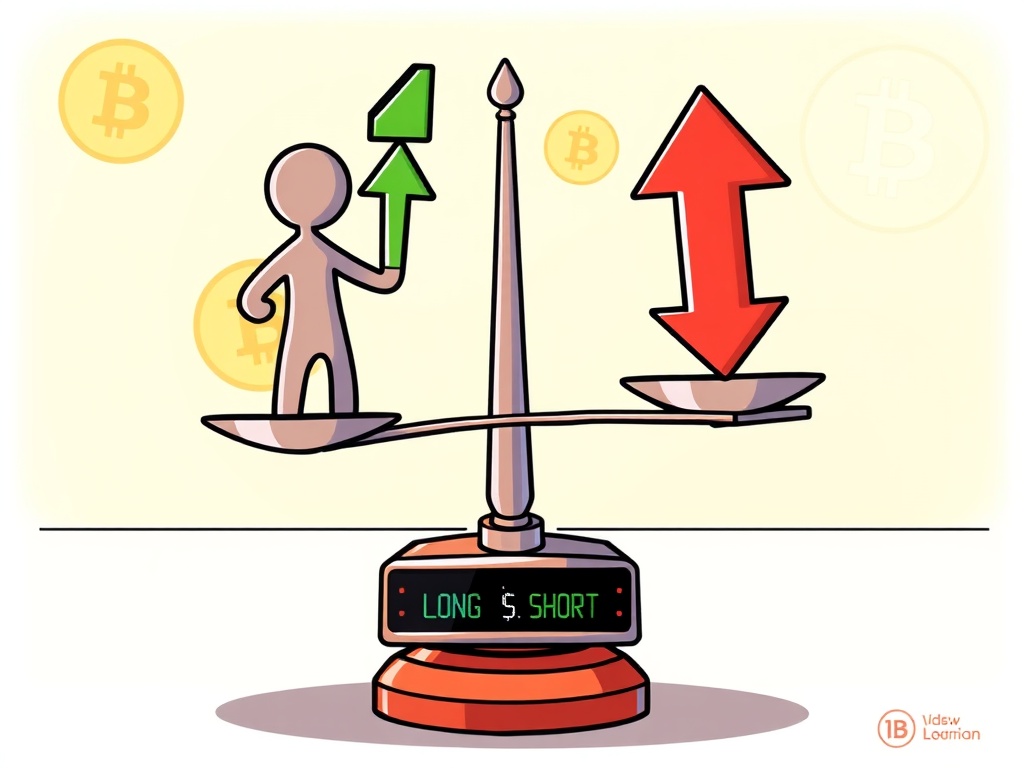BitcoinWorld

Crucial US Dollar Strength: What the Fed Meeting Means for Global Markets
The global financial landscape is perpetually shifting, and at the heart of recent movements lies the formidable US Dollar strength. For cryptocurrency enthusiasts and investors, understanding these traditional market dynamics is not just academic; it is crucial for navigating the volatile digital asset space. As the dollar edges higher, all eyes are now firmly fixed on the Federal Reserve’s upcoming meeting, an event poised to send ripples across every asset class, from commodities to digital currencies.
Understanding the Ascent of US Dollar Strength
The US Dollar strength has been a dominant theme in recent financial markets. Several factors contribute to this ascent, making the dollar an attractive safe haven and a preferred currency for global transactions. When global economic uncertainty rises, investors often flock to the dollar, viewing it as a reliable store of value. This flight to safety tends to bolster its value against other major currencies.
Key drivers behind the dollar’s recent performance include:
- Interest Rate Differentials: Higher interest rates in the US compared to other developed economies make dollar-denominated assets more appealing, attracting capital inflows.
- Economic Resilience: Despite global headwinds, the US economy has shown relative resilience, with stronger employment figures and consumer spending compared to some European or Asian counterparts.
- Geopolitical Tensions: In times of geopolitical instability, the dollar often benefits from its status as the world’s primary reserve currency.
This strengthening dollar has a multifaceted impact. For instance, it makes US exports more expensive and imports cheaper, affecting trade balances. For international companies, it can impact earnings when converting foreign revenues back into dollars. In the cryptocurrency world, a strong dollar can sometimes correlate with downward pressure on risk assets like Bitcoin, as investors might prefer less volatile traditional investments.
The Pivotal Fed Meeting: What to Expect
The impending Fed meeting is arguably the most anticipated event on the economic calendar. The Federal Reserve’s monetary policy decisions, particularly regarding interest rates, have profound implications for global financial markets. The market is keenly awaiting signals on the future trajectory of monetary policy, especially after a period of aggressive rate hikes aimed at taming inflation.
Here’s what market participants will be scrutinizing during the Fed meeting:
- Interest Rate Decision: Will the Fed opt for another interest rate hike, a pause, or even hint at cuts in the near future? Each scenario carries distinct implications.
- Forward Guidance: Beyond the immediate decision, the Fed’s statement and Chair Jerome Powell’s press conference will be dissected for clues about the future path of rates and economic outlook.
- Economic Projections: Updates to GDP, inflation, and unemployment forecasts will provide insights into the Fed’s assessment of the economy’s health.
A continued hawkish stance, indicating more rate hikes, would likely further support the dollar and potentially weigh on risk assets. Conversely, a dovish pivot, suggesting a pause or future cuts, could weaken the dollar and provide a tailwind for cryptocurrencies and equities.
Understanding the Interest Rate Hike Implications for Markets
The concept of an interest rate hike by the Federal Reserve is simple: it increases the cost of borrowing money. However, its ripple effects are far-reaching and complex, impacting everything from consumer loans to corporate investments and, crucially, global financial markets. For the average person, it means higher mortgage rates, car loans, and credit card interest. For businesses, it translates to higher costs for expansion and operations.
In the broader financial landscape, an interest rate hike typically leads to:
- Stronger Currency: As discussed, higher rates make a currency more attractive to foreign investors seeking better returns on their investments.
- Lower Bond Prices, Higher Yields: New bonds issued at higher rates make older, lower-yielding bonds less attractive, pushing their prices down and yields up.
- Pressure on Equities: Higher borrowing costs can reduce corporate profits, and higher discount rates can lower the present value of future earnings, often leading to stock market corrections.
- Impact on Commodities: Commodities priced in dollars, like oil and gold, can become more expensive for buyers using other currencies, potentially dampening demand.
For the cryptocurrency market, the relationship with interest rates is nuanced. Historically, during periods of aggressive rate hikes, risk assets like Bitcoin and Ethereum have faced headwinds. This is because higher interest rates make safer, fixed-income investments more appealing, drawing capital away from speculative assets. However, the long-term narrative of crypto adoption and technological innovation often provides a counter-balance to these macroeconomic pressures.
Navigating the Dynamic Forex Market
The forex market, or foreign exchange market, is the largest and most liquid financial market in the world, where currencies are traded. Its daily turnover dwarfs that of stock markets, making it a crucial barometer of global economic sentiment. The recent movements of the US dollar have been a central theme within this market, influencing major currency pairs like EUR/USD, USD/JPY, and GBP/USD.
Traders in the forex market closely monitor central bank decisions, economic data releases, and geopolitical events. A strong dollar environment means that it takes more units of other currencies to buy one US dollar. This can have significant implications for international trade and investment flows.
Consider these aspects of the forex market:
| Aspect | Impact of Strong Dollar |
|---|---|
| Imports/Exports | Makes US imports cheaper, US exports more expensive. |
| Corporate Earnings | Can reduce earnings for US multinational corporations converting foreign profits. |
| Debt Repayment | Increases the cost of servicing dollar-denominated debt for foreign entities. |
| Commodity Prices | Can put downward pressure on commodity prices (e.g., oil, gold) for non-dollar buyers. |
Understanding these dynamics is vital for anyone participating in global markets, including those with diversified portfolios that include digital assets. The interplay between traditional currency markets and the nascent crypto space is becoming increasingly evident, highlighting the need for a holistic view of financial trends.
Shaping the Global Economic Outlook
The decisions made by the Federal Reserve and the subsequent movements in the US Dollar strength are not isolated events; they are critical components shaping the broader global economic outlook. The interconnectedness of economies means that what happens in the US financial market quickly reverberates worldwide. Inflation remains a significant concern globally, prompting central banks in various countries to also consider or implement their own rate adjustments.
The current global economic outlook is characterized by a mix of challenges and potential opportunities:
- Inflationary Pressures: While some regions see inflation easing, others are still grappling with persistent price increases, influenced by supply chain disruptions, energy costs, and robust demand.
- Growth Concerns: Many economies face the challenge of balancing inflation control with sustaining economic growth. Aggressive monetary tightening can risk pushing economies into recession.
- Geopolitical Factors: Ongoing conflicts and trade tensions continue to add layers of uncertainty, impacting energy markets, food prices, and investment flows.
- Emerging Markets Vulnerability: A strong dollar can be particularly challenging for emerging markets, increasing their dollar-denominated debt burdens and making it harder to attract foreign investment.
For the crypto market, this complex global economic outlook means that investors need to be agile. While cryptocurrencies are often touted as a hedge against traditional financial systems, they are not entirely decoupled. Macroeconomic forces, including interest rate policies and currency movements, can significantly influence investor sentiment and capital allocation towards digital assets.
Challenges and Opportunities for Investors
The current macroeconomic environment presents both challenges and opportunities for investors, particularly those with exposure to cryptocurrencies.
Challenges:
- Increased Volatility: Uncertainty surrounding central bank policies and economic data can lead to heightened volatility across all asset classes, including crypto.
- Risk-Off Sentiment: A strong dollar and rising interest rates can foster a “risk-off” environment, where investors reduce exposure to speculative assets in favor of safer alternatives.
- Liquidity Concerns: In times of economic stress, market liquidity can tighten, potentially exacerbating price movements.
Opportunities:
- Strategic Positioning: Understanding these macro trends allows investors to strategically position their portfolios, perhaps by rebalancing between traditional assets and crypto.
- Dollar-Cost Averaging: For long-term crypto investors, periods of market weakness due to macro pressures can present opportunities for dollar-cost averaging into preferred assets.
- Innovation Continues: Regardless of short-term market fluctuations, the underlying innovation and development within the blockchain and crypto space continue, laying the groundwork for future growth.
Actionable Insights for Navigating the Markets
How can investors navigate these complex dynamics?
- Stay Informed: Closely monitor official statements from the Federal Reserve and other major central banks. Understand the nuances of their language and economic projections.
- Diversify Wisely: While crypto offers unique benefits, a well-diversified portfolio that considers both traditional assets and digital assets can help mitigate risks.
- Assess Risk Tolerance: Re-evaluate your personal risk tolerance in light of potential market volatility. Do not invest more than you can afford to lose.
- Long-Term Perspective: For many crypto assets, the long-term growth story is driven by technological adoption and network effects. Try to look beyond short-term price swings driven by macro factors.
- Understand Correlations: Recognize that while crypto aims to be decentralized, it is not immune to global financial trends. Learn how a strong dollar or rising interest rates might impact your crypto holdings.
Conclusion: The Dollar’s Dominance and Future Implications
The dollar’s recent upward trajectory and the looming Federal Reserve meeting underscore the intricate dance between monetary policy and global market dynamics. The decisions made by the Fed regarding interest rate hikes will undoubtedly shape the immediate future of the forex market and contribute significantly to the broader global economic outlook. While the US Dollar strength can exert pressure on risk assets like cryptocurrencies in the short term, understanding these fundamental economic forces empowers investors to make more informed decisions.
The cryptocurrency market, while revolutionary, operates within this larger financial ecosystem. By paying close attention to these macroeconomic signals, investors can better anticipate market movements and strategically position themselves for both challenges and opportunities ahead. The journey through the current economic climate demands vigilance, adaptability, and a comprehensive understanding of both traditional and digital asset landscapes.
To learn more about the latest Forex market trends, explore our article on key developments shaping the US Dollar and interest rates liquidity.
This post Crucial US Dollar Strength: What the Fed Meeting Means for Global Markets first appeared on BitcoinWorld and is written by Editorial Team





